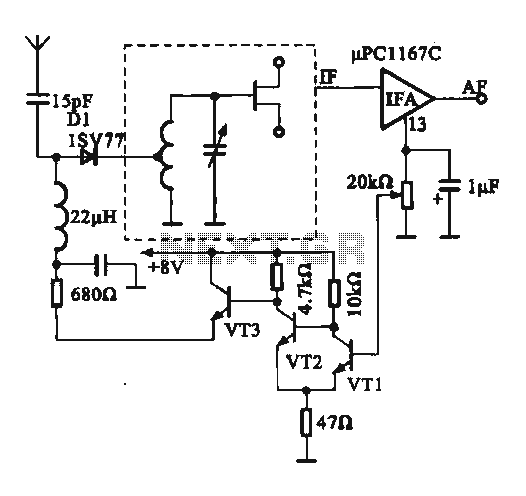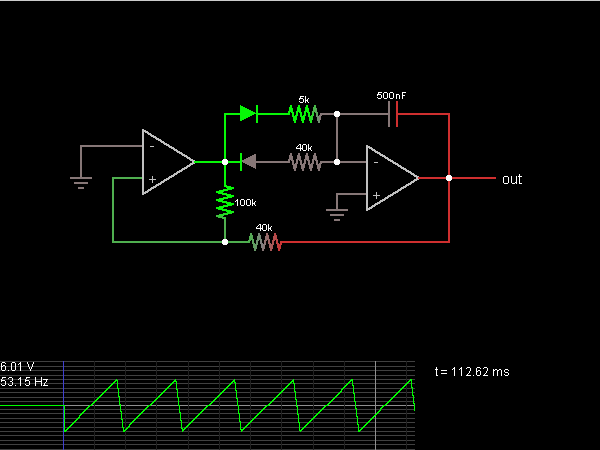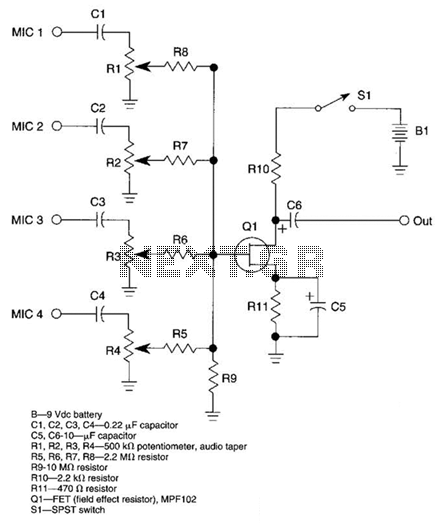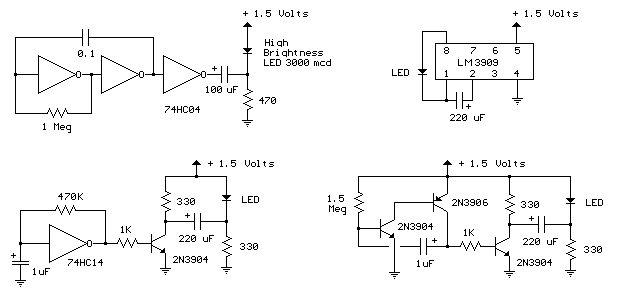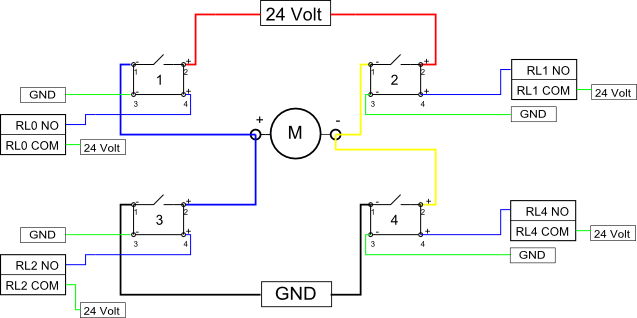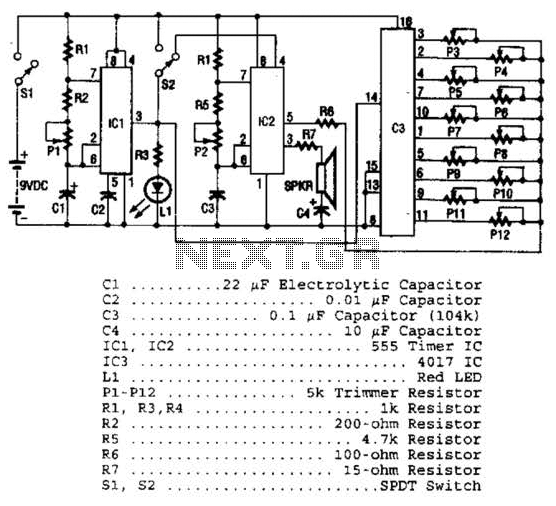
wien bridge sine wave oscillator circuit using lm107
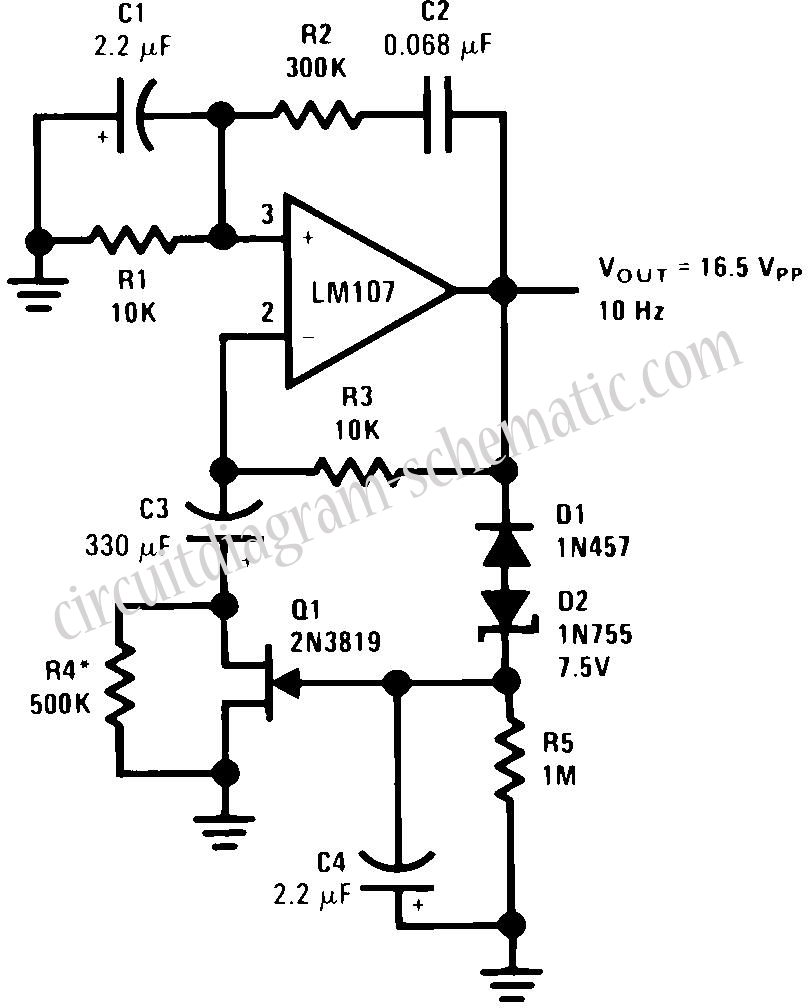
This circuit eliminates the traditional tungsten filament lamp amplitude regulator along with its associated time constant and linearity issues. Additionally, it addresses the reliability problems commonly found with lamps. The Wien Bridge oscillator is utilized, leveraging the fact that the phase of the voltage across the parallel branch of a series and parallel RC network matches the phase of the applied voltage across both networks at a specific frequency. The phase lags as frequency increases and leads as frequency decreases. When the Wien Bridge network is employed as a positive feedback element around an amplifier, oscillation occurs at the frequency where the phase shift is zero. Extra negative feedback is incorporated to set the loop gain to unity at the oscillation frequency, stabilizing the oscillation frequency and minimizing harmonic distortion. The circuit presented here differs from traditional implementations primarily in the design of the negative feedback stabilization scheme. The operation of the circuit is as follows: negative peaks exceeding -8.25V activate diodes D1 and D2, charging capacitor C4. The charge stored in C4 provides bias to transistor Q1, which regulates the amplifier gain. Capacitor C3 serves as a low-frequency roll-off component in the feedback network, preventing offset voltage and current errors from being amplified. Distortion levels are influenced by the amplifier's open-loop gain and the response time of the negative feedback loop filter formed by resistor R5 and capacitor C4. A balance must be struck between the amplitude stabilization time constant and oscillator distortion. Resistor R4 is selected to adjust the negative feedback loop, ensuring that the FET operates with a slight negative gate bias. The circuit design offers optimal values for a general-purpose oscillator.
The described circuit functions as a robust oscillator design, utilizing the Wien Bridge oscillator principle to achieve stable oscillations without the reliability concerns associated with traditional filament lamps. The elimination of the amplitude regulator enhances overall circuit performance by removing time constant issues and improving linearity. The Wien Bridge's unique ability to match phase shifts at a specific frequency is pivotal for achieving sustained oscillation.
In this configuration, the positive feedback mechanism is critical, as it allows the circuit to reach the oscillation condition where the feedback signal reinforces the input signal. The incorporation of negative feedback is essential for stabilizing the oscillation frequency, which is vital in applications requiring precision. The careful selection of components, such as diodes D1 and D2, ensures that the circuit can respond quickly to transient conditions, enabling effective charge management for capacitor C4.
The use of C3 as a low-frequency roll-off capacitor is a strategic choice to mitigate the effects of DC offset errors, which can lead to distortion if amplified. The relationship between the open-loop gain of the amplifier and the feedback loop's response time is crucial in determining the overall distortion characteristics of the oscillator. Thus, R5 and C4 must be chosen carefully to optimize the performance based on the desired application.
The adjustment of R4 to maintain a small negative gate bias on the FET is a sophisticated technique that enhances the circuit's stability and performance. This design approach allows for a general-purpose oscillator capable of operating efficiently across a range of frequencies while minimizing distortion and maintaining reliable operation. Overall, this circuit represents a significant advancement in oscillator design, providing a versatile solution for various electronic applications.This circuit is that the traditional tungsten filament lamp amplitude regulator is eliminated along with its time constant and linearity problems. In addition, the reliability problems associated with a lamp are eliminated. The Wien Bridge oscillator is widely used and takes advantage of the fact that the phase of the voltage across the parallel b
ranch of a series and a parallel RC network connected in series, is the same as the phase of the applied voltage across the two networks at one particular frequency and that the phase lags with increasing frequency and leads with decreasing frequency. When this network the Wien Bridge is used as a positive feedback element around an amplifier, oscillation occurs at the frequency at which the phase shift is zero.
Additional negative feedback is provided to set loop gain to unity at the oscillation frequency, to stabilize the frequency of oscillation, and to reduce harmonic distortion. Here is a schematic drawing : The circuit presented here differs from the classic usage only in the form of the negative feedback stabilization scheme.
Circuit operation is as follows: negative peaks in excess of -8. 25V cause D1 and D2 to conduct, charging C4. The charge stored in C4 provides bias to Q1, which determines amplifier gain. C3 is a low frequency roll-off capacitor in the feedback network and prevents offset voltage and offset current errors from being multiplied by amplifier gain. Distortion is determined by amplifier open-loop gain and by the response time of the negative feedback loop filter, R5 and C4.
A trade-off is necessary in determining amplitude stabilization time constant and oscillator distortion. R4 is chosen to adjust the negative feedback loop so that the FET is operated at a small negative gate bias.
The circuit shown provides optimum values for a general purpose oscillator. 🔗 External reference
The described circuit functions as a robust oscillator design, utilizing the Wien Bridge oscillator principle to achieve stable oscillations without the reliability concerns associated with traditional filament lamps. The elimination of the amplitude regulator enhances overall circuit performance by removing time constant issues and improving linearity. The Wien Bridge's unique ability to match phase shifts at a specific frequency is pivotal for achieving sustained oscillation.
In this configuration, the positive feedback mechanism is critical, as it allows the circuit to reach the oscillation condition where the feedback signal reinforces the input signal. The incorporation of negative feedback is essential for stabilizing the oscillation frequency, which is vital in applications requiring precision. The careful selection of components, such as diodes D1 and D2, ensures that the circuit can respond quickly to transient conditions, enabling effective charge management for capacitor C4.
The use of C3 as a low-frequency roll-off capacitor is a strategic choice to mitigate the effects of DC offset errors, which can lead to distortion if amplified. The relationship between the open-loop gain of the amplifier and the feedback loop's response time is crucial in determining the overall distortion characteristics of the oscillator. Thus, R5 and C4 must be chosen carefully to optimize the performance based on the desired application.
The adjustment of R4 to maintain a small negative gate bias on the FET is a sophisticated technique that enhances the circuit's stability and performance. This design approach allows for a general-purpose oscillator capable of operating efficiently across a range of frequencies while minimizing distortion and maintaining reliable operation. Overall, this circuit represents a significant advancement in oscillator design, providing a versatile solution for various electronic applications.This circuit is that the traditional tungsten filament lamp amplitude regulator is eliminated along with its time constant and linearity problems. In addition, the reliability problems associated with a lamp are eliminated. The Wien Bridge oscillator is widely used and takes advantage of the fact that the phase of the voltage across the parallel b
ranch of a series and a parallel RC network connected in series, is the same as the phase of the applied voltage across the two networks at one particular frequency and that the phase lags with increasing frequency and leads with decreasing frequency. When this network the Wien Bridge is used as a positive feedback element around an amplifier, oscillation occurs at the frequency at which the phase shift is zero.
Additional negative feedback is provided to set loop gain to unity at the oscillation frequency, to stabilize the frequency of oscillation, and to reduce harmonic distortion. Here is a schematic drawing : The circuit presented here differs from the classic usage only in the form of the negative feedback stabilization scheme.
Circuit operation is as follows: negative peaks in excess of -8. 25V cause D1 and D2 to conduct, charging C4. The charge stored in C4 provides bias to Q1, which determines amplifier gain. C3 is a low frequency roll-off capacitor in the feedback network and prevents offset voltage and offset current errors from being multiplied by amplifier gain. Distortion is determined by amplifier open-loop gain and by the response time of the negative feedback loop filter, R5 and C4.
A trade-off is necessary in determining amplitude stabilization time constant and oscillator distortion. R4 is chosen to adjust the negative feedback loop so that the FET is operated at a small negative gate bias.
The circuit shown provides optimum values for a general purpose oscillator. 🔗 External reference
